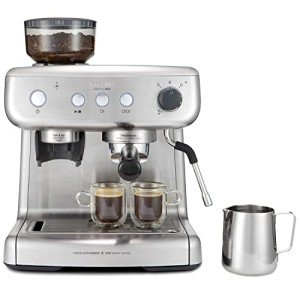The Ultimate Guide to Buying Espresso Coffee Machines
Espresso coffee machines have quickly become a staple in homes and coffee shops around the world. With their capability to produce rich, concentrated coffee rapidly, numerous coffee fanatics choose developing espresso in your home instead of counting on coffee bar. Purchasing an espresso machine can be a challenging process, offered the myriad of choices available in the market. This short article offers extensive insights into various kinds of espresso machines, essential features to think about, and ultimately helps aspiring home baristas make an informed choice.
Understanding Espresso Machines
There are several kinds of espresso machines, each developed for various user choices and requirements. Below is a table detailing the types of machines readily available:
| Type | Description | Pros | Cons |
|---|---|---|---|
| Manual Machines | Operated by hand, permitting full control | Greater control & & quality Steeper knowing curve | |
| Semi-Automatic Machines | Combines manual operation with automated functions | Versatility and consistency | Needs more skill than fully automatic |
| Completely Automatic Machines | Automated brewing, making espresso with the push of a button | Convenience and consistency | Less control over the brewing procedure |
| Pill Machines | Use pre-packaged capsules for brewing | Very simple to use | Restricted range and greater long-term expense |
| Super-Automatic Machines | Totally automated procedures including grinding & & brewing | All-in-one convenience | More costly and less manual control |
Selecting the best machine mainly depends upon the user's familiarity with coffee developing, desired control level, and budget.
Key Features to Consider
When trying to find an espresso machine, numerous essential features need to be considered:
- Pressure: Look for a machine that operates at a minimum of 9 bars of pressure, which is optimal for extracting espresso.
- Boiler System: Machines might come with single or dual boiler systems. Dual systems are considered more versatile as they can brew espresso and steam milk at the same time.
- Milk Frothing Capability: For lattes and cappuccinos, a good steam wand or automatic milk frothing alternative is essential.
- Size and Design: Consider the readily available space in the kitchen. Bean To Cup Espresso Machines might use more features but require more counter space.
- Reduce of Cleaning: Look for machines with detachable parts and easy-to-clean surface areas, as regular upkeep is key to longevity.
- Modification Options: Some machines offer personalized settings for temperature, volume, and strength. This function is significant for people who take pleasure in try out different tastes.
- Cost Range: Espresso machines can vary from affordable to luxury models. Set a budget that shows your usage frequency and top priorities.
Budgeting for an Espresso Machine
Investing in an espresso machine can differ widely in cost. It is necessary to establish a budget that lines up with your coffee intake and preferences. As a guide:
- Under ₤ 100: Entry-level pill machines and standard manual machines.
- ₤ 100 - ₤ 500: Good quality semi-automatic machines with more features and much better construct quality.
- ₤ 500 - ₤ 1,500: Professional-level machines offering sophisticated features, dual boilers, and enhanced efficiency.
- ₤ 1,500 and above: High-end, commercial-grade machines developed for serious lovers and coffee shop owners.
Upkeep and Care
Correct maintenance extends the life of an espresso machine and maintains the quality of the coffee. Here are some maintenance pointers:
- Regularly tidy the portafilter and other removable parts.
- Descale the machine at recommended periods to avoid mineral build-up.
- Rinse the steam wand after every use to remove milk residue.
- Check the water quality; using filtered water can significantly enhance the taste and decrease scale.
FAQs
1. What is the very best type of espresso machine for beginners?
For newbies, a semi-automatic espresso machine is frequently advised, as it offers a balance of control and user-friendliness.
2. Can I make latte art with any espresso machine?
You can make latte art with machines that have an excellent steam wand or automatic milk frothing abilities.
3. How frequently should I descale my espresso machine?
You should descale your espresso machine every three to 6 months, depending on the hardness of your water and use frequency.
4. Is a more costly machine worth the investment?
Usually, more expensive machines use better construct quality, consistency, and feature sets, which can improve the general coffee experience. However, the worth is subjective to user requirements.
5. Do I need a grinder, or exist machines that include one?
Some super-automatic and high-end machines come with built-in grinders, while lower to mid-range models might require a different grinder for ideal espresso extraction.
Getting an espresso machine is an amazing investment for coffee fans and lovers. By comprehending the various types, features, and key considerations included, potential buyers can discover the perfect machine to suit their requirements. Whether it's the joy of crafting the ideal shot of espresso or getting the capability to brew cafe-quality coffee in the house, the best espresso machine can change the day-to-day coffee routine into a wonderful experience.

